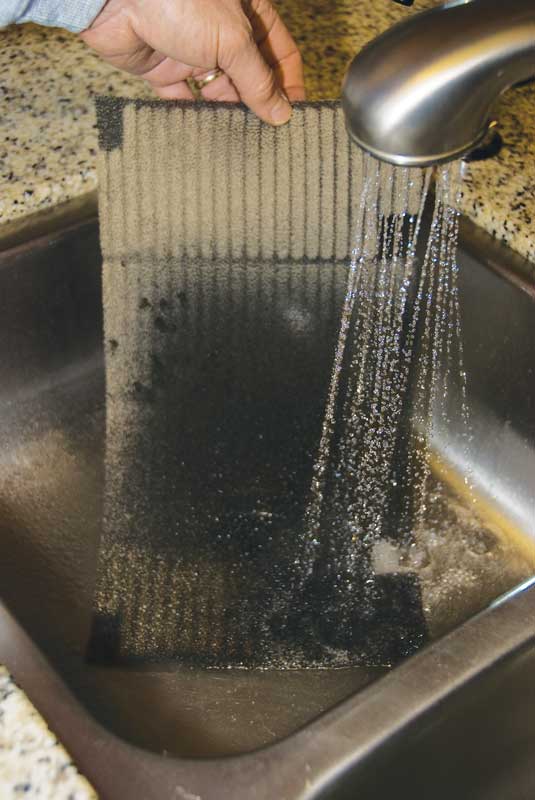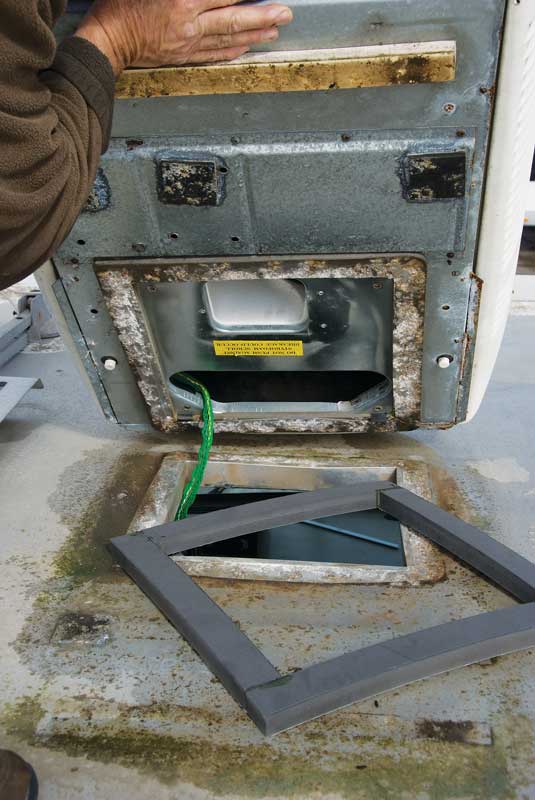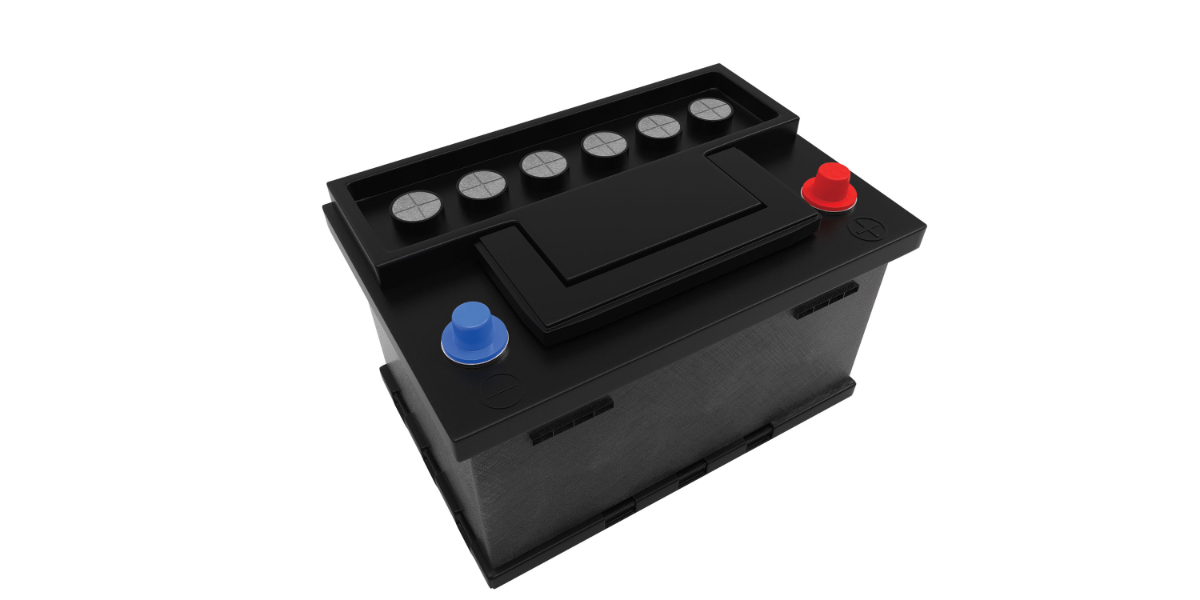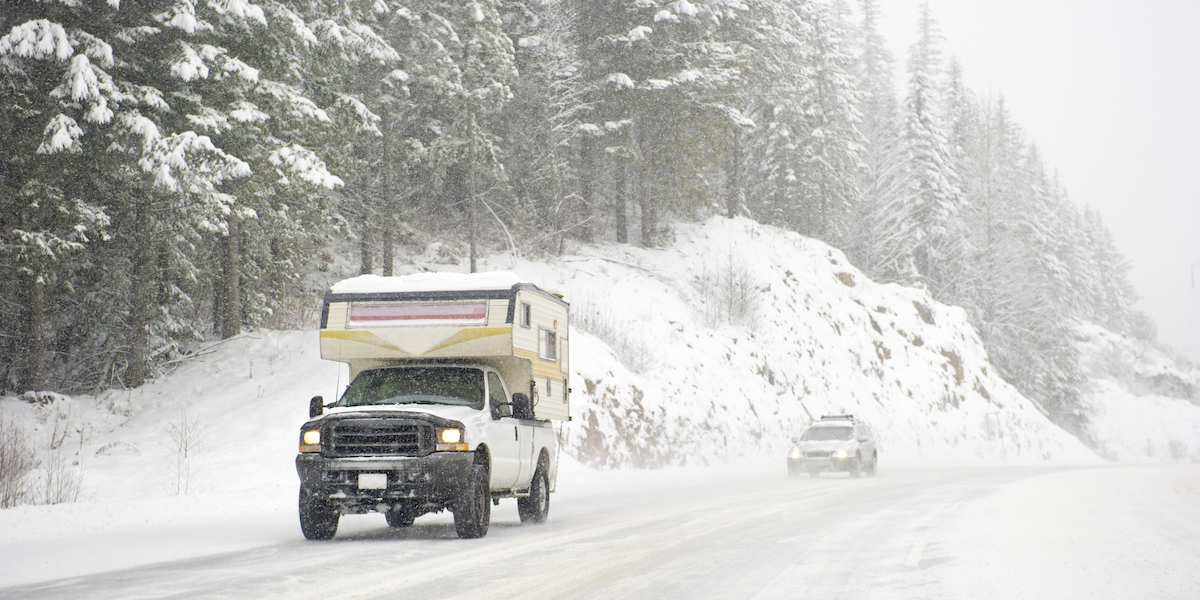RV Air Conditioner Maintenance Tips
Image Caption:
Whether on the roof or in the basement area, motorhome air-conditioning units function on the same principle: They extract heat from the interior.
The A/C utilizes a compressor and a refrigerant (R22) in a sealed system where refrigerant is transformed from a liquid into a gas and vice versa to transfer heat. Inside the motorhome, a blower moves air through a set of fins and tubes called the evaporator. Upon entering the evaporator, the refrigerant is a liquid. It vaporizes, absorbing heat from the motorhome’s interior. The compressor applies pressure to the gas while moving it outside, into the condenser – another set of fins and tubes. A blower moves outside air through the fins, which release heat, and the gas returns to a liquid state. A thermostat regulates compressor run time and, thus, the amount of cooling.
RV Air Conditioner Voltage
When air conditioner performance is a problem, the first step is to check the AC voltage inside the motorhome. Voltage may be too low. An air conditioner compressor will not operate properly on voltage below 110 volts AC. With the air conditioning unit running on max, refer to a voltmeter built in at the factory (if so equipped), to a portable voltmeter that can be plugged into any wall outlet, or a multi-test meter with probes inserted into a wall outlet.
If AC voltage is lower than 110, check voltage at the power source, such as an RV park electrical outlet. If it’s more than a couple of volts higher there, the problem is inside your motorhome and should be checked by an electrician, assuming you are using the 10-gauge (or larger) power cord supplied with the coach.
RV Air Conditioner Compressor
If the A/C unit is not cooling the RV adequately, make sure the compressor is running. Set the control or thermostat to the fan-only position. Then change to maximum cooling. You should hear a thump as the A/C compressor starts and continues running, producing cool air in a few minutes. If the compressor does not start, a number of causes are possible, including thermostat malfunction. Check the thermostat for loose wires.

Remove and clean the foam air filters at least once a year, or when visibly dirty. Use only soap and water to wash the filters.
If the compressor starts and runs, allow it to operate for 10 minutes and check for temperature differential using a room temperature thermometer available at any hardware store. Air temperature at the outlet nearest the A/C unit should be 15 to 20 degrees Fahrenheit cooler than the intake air.
RV Air Conditioner Intake Filter
If airflow appears to be lower than normal, the problem may be the intake air filter, which should be cleaned, or it could be ice blocking the evaporator (in highly humid areas). Run the unit on a fan-only setting for about 10 minutes to see if airflow improves with thawing of ice.
Even when an A/C unit is operating properly, maintenance should be performed once a year, preferably springtime. With A/C units mounted on rooftops, remove the shroud attached to the ceiling, which should expose one or two thin foam air filters. Remove, wash with soap and water, and dry. Check for position of the thermostat temperature probe, a small tube that should be positioned in the intake airflow.
RV Air Conditioner Gasket
And check to make sure that the gasket sealing the A/C to the roof is intact. Reinstall the shroud. With A/C units that are located in an under-floor area, check the owner’s manual for the location of the filter and type of maintenance recommended.

Make sure the gasket sealing the air conditioner to the roof is in good shape. Annual inspection is easy, but requires a trip up to the roof.
With rooftop units, the exterior shroud should be removed. Check for debris blocking cooling fins and for damaged cooling fins. Check for loose wiring connections; however, do not disconnect components because capacitors that store electricity can produce a healthy electrical shock even when the unit is not running. Next, replace the shroud.
If the unit passes simple tests and still is not cooling properly, low refrigerant charge may be the problem, which must be checked by a qualified service technician.
Too much heat load on the motorhome, such as full sun on a hot day may result in inadequate A/C performance. Whenever possible, park in the shade, and use awnings to block the sun off exterior walls.





